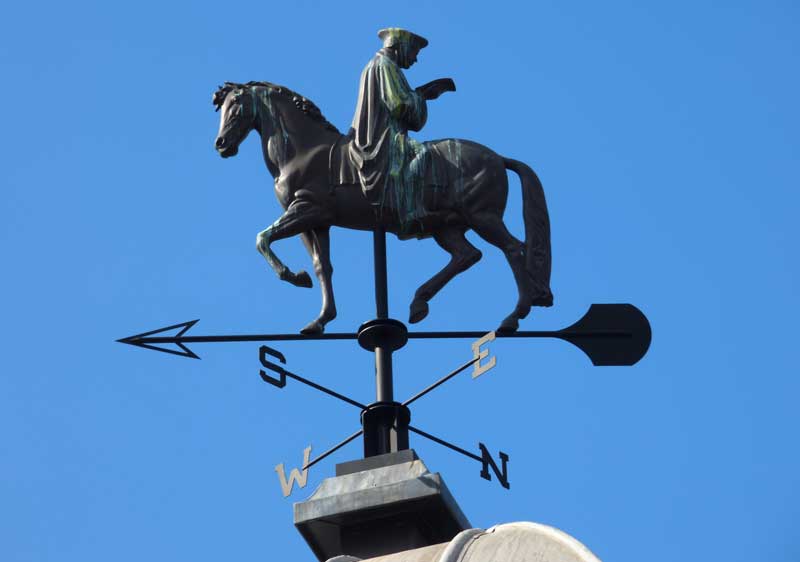
The Whitechapel Library was once the intellectual hub of East London's Jewish Community and, such was its reputation as a place of refuge and education that it was often referred to as the University of the Ghetto.
The likes of mathematician Selig Brodetsky; the humanist Jacob Bronowsky; First World War poet Isaac Rosenberg and novelist Israel Zangwill would pass through its distinctive red-brick facade, to while away the hours in its reference reading room.
When the building was first erected in the latter years of the 19th century, plans were afoot to crown it with a suitably ornate weather vane.
However, for reasons that have never been fully ascertained - but which probably boiled down to the simple fact that they never quite got round to it - this was never done and the library spent the next hundred and so years catering to the intellectual needs of the local working class populace sans vane.
Then, in 2003, the neighbouring Whitechapel Gallery acquired the building, and set about incorporating its landmark facade into its ambitious expansion plans.
The old library dutifully packed its books and decamped to a new premises about three quarters of a mile away on Whitechapel Road, where it proceeded to rebrand itself as "The Ideas Store" and promoted itself - demonstrating a wonderful lack of pretentiousness - as being "next to Sainsbury's."
By 2009, the Whitechapel Gallery had completed its expansion, and its new extended premises were opened.
And, on top of the cupola above it, the unrealised weather vane finally appeared, taking the form of a specially commissioned, and truly splendid, copper and steel wind vane, created by the Canadian artist, sculptor and musician. Rodney Graham.
It features Graham himself in the guise of the 16th century humanist scholar Desiderius Erasmus (1466 - 1536), perched backwards on a trotting horse, deeply engrossed in a copy of Erasmus's best known work The Praise Of Folly - satirical attack on superstitions and other traditions of European society in general and the western Church in particular - which the scholar is said to have composed on an equestrian journey between Italy and England.
The wind vane is now an eye catching addition to the Whitechapel skyline.
So next time you find yourself coming out of, or going in to, Aldgate East Underground Station, just take a brief moment to look up at the figure who balances precariously on the back of a large horse and show your appreciation with a heart felt wave as you embark on, or disembark from, the folly that is the London Underground system.
Tally ho!